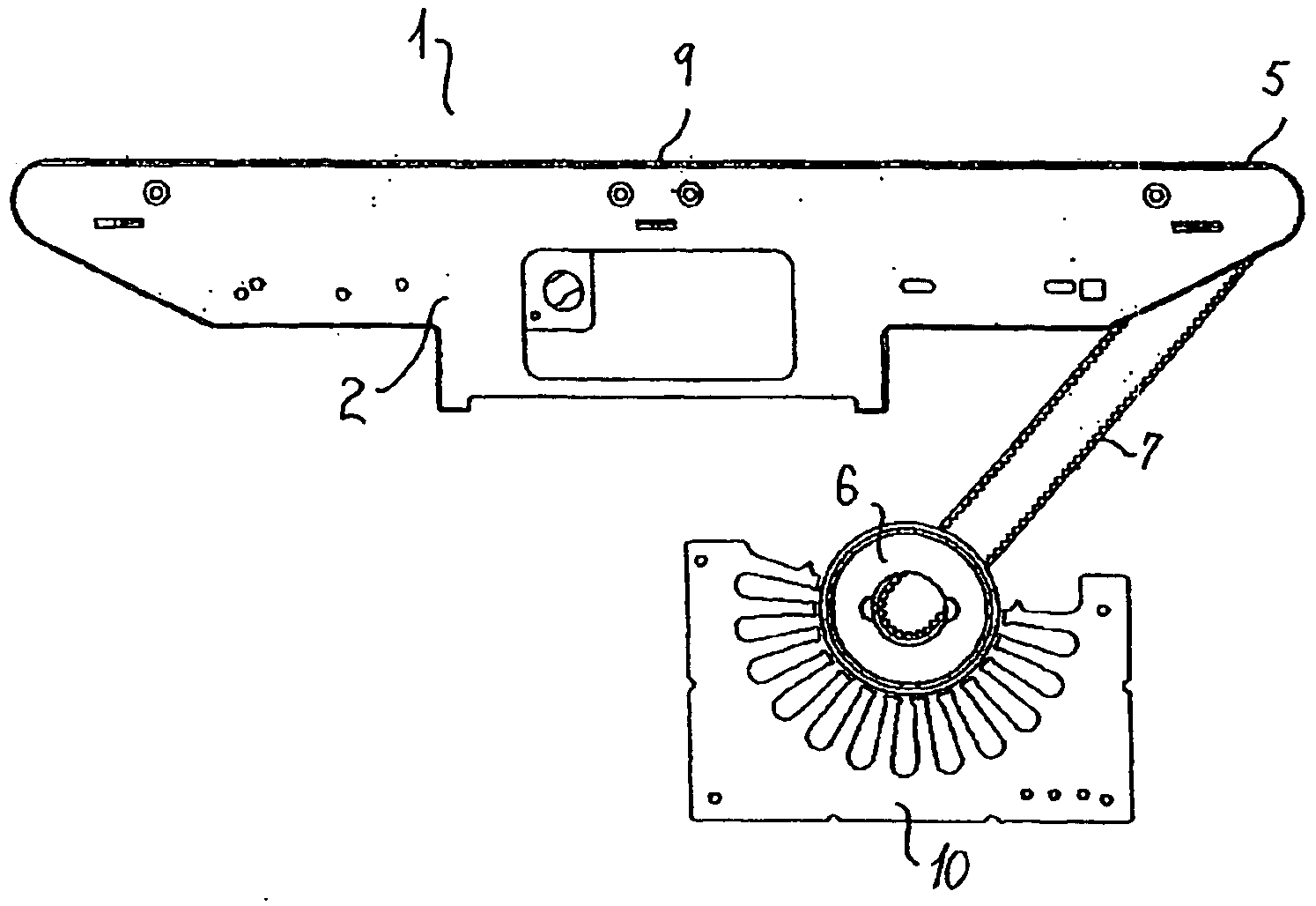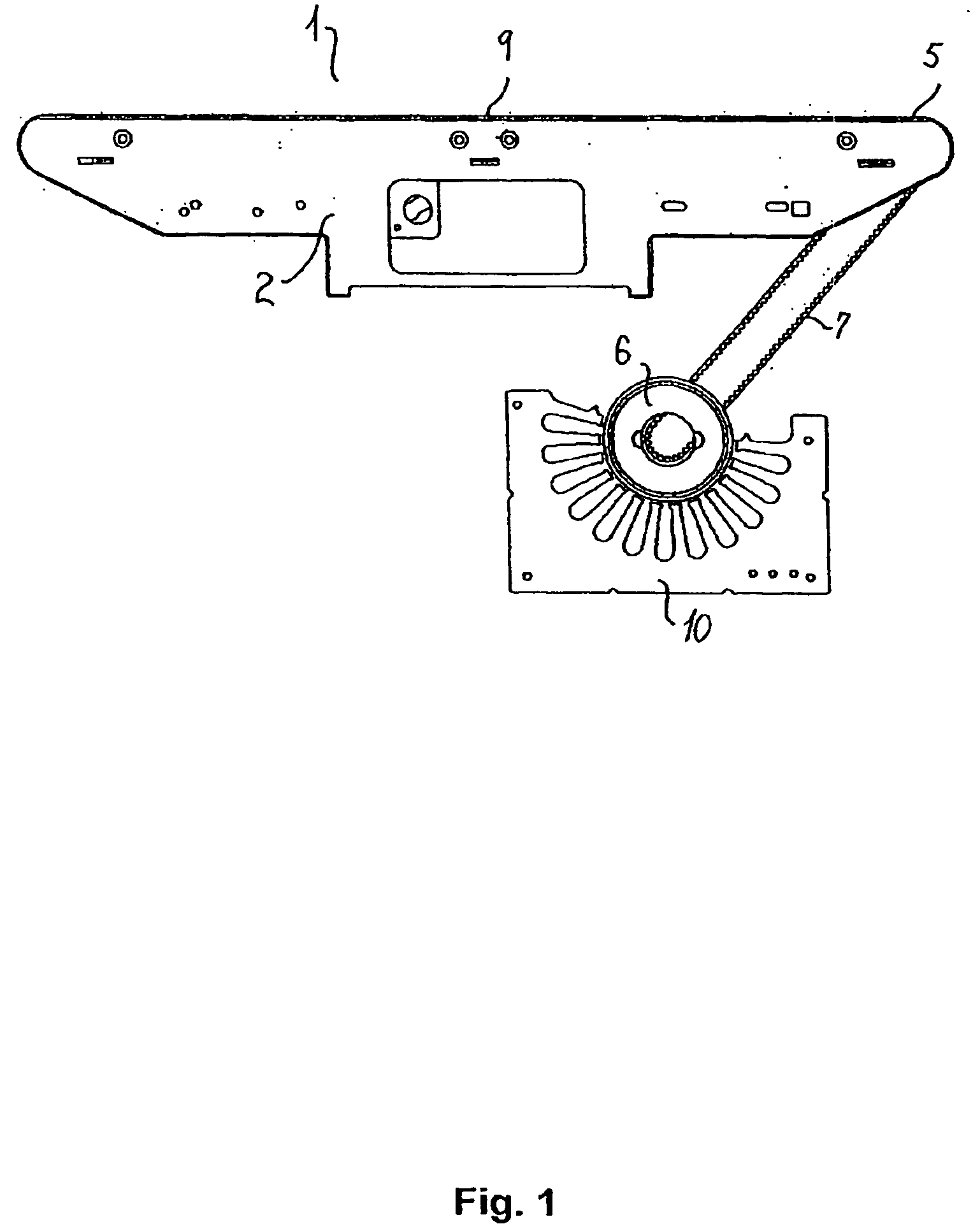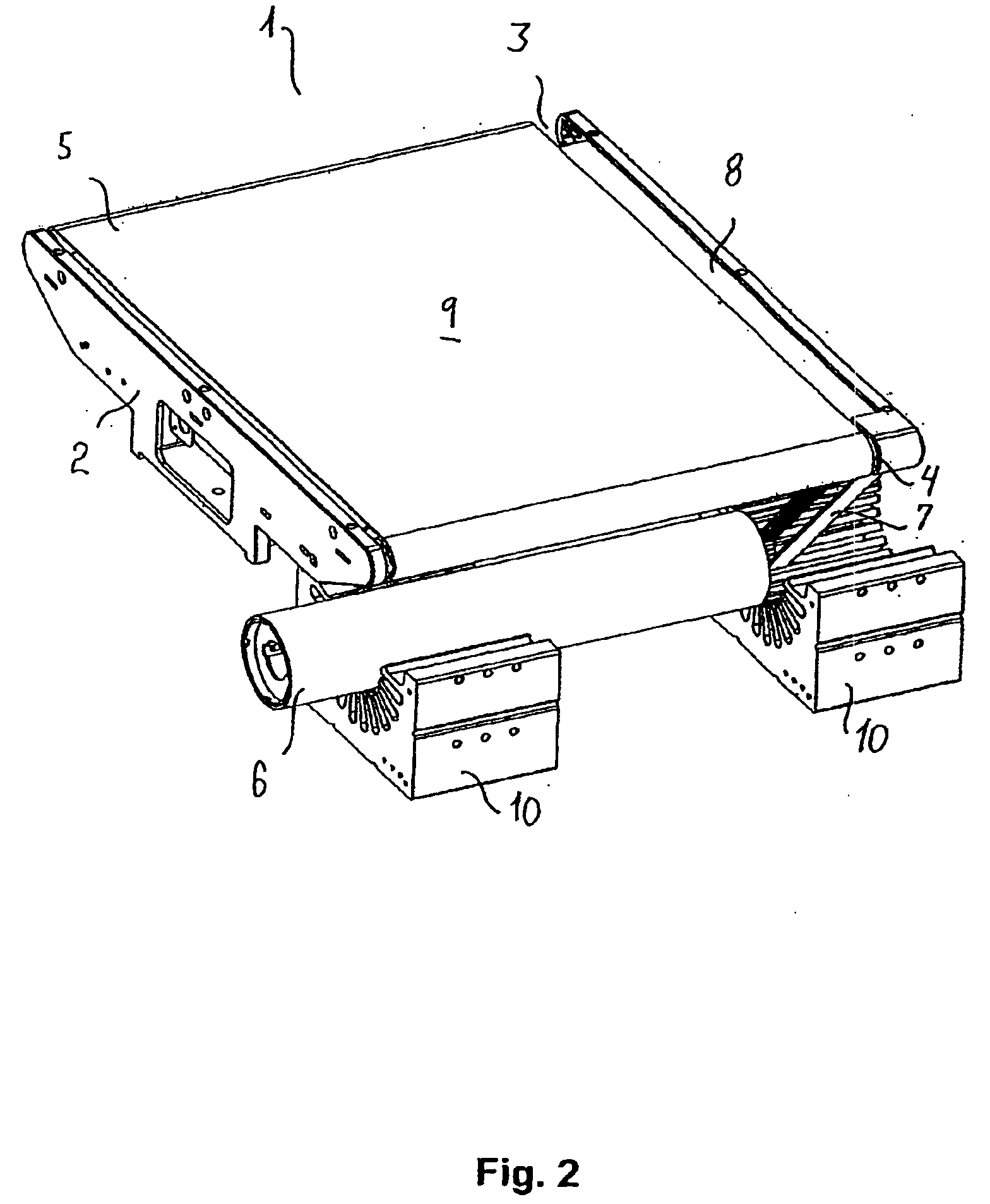Sorter Conveyor
- Summary
- Abstract
- Description
- Claims
- Application Information
AI Technical Summary
Benefits of technology
Problems solved by technology
Method used
Image
Examples
Embodiment Construction
[0095] The cross-belt unit 1 shown in FIGS. 1-3 comprises a frame part 2 supporting two rollers 3, 4 around which the endless cross-belt 5 is running. One of the rollers 4 is the drive roller 4 connected to a rotor 6 by means of a toothed belt 7. The frame part 2 further carries a support plate 8 supporting the cross-belt 5 on the side opposite to the side forming the article-supporting surface 9 of the cross-belt unit 1. The rotor 6 is situated above two stationary electric stator parts 10.
[0096] The schematic view in FIG. 4 of the first embodiment of the cross-belt unit 1 may be compared to a second embodiment of a cross-belt unit 1I shown in FIGS. 5-8. In the second embodiment, the transmission means comprises an intermediate roller 11 connected at a first end to the rotor 6 by means of a first belt and at a second end thereof to the drive roller 4 by means of a second belt 7'. This configuration provides a higher freedom of design and of changing and makes variations of a given ...
PUM
 Login to View More
Login to View More Abstract
Description
Claims
Application Information
 Login to View More
Login to View More - R&D
- Intellectual Property
- Life Sciences
- Materials
- Tech Scout
- Unparalleled Data Quality
- Higher Quality Content
- 60% Fewer Hallucinations
Browse by: Latest US Patents, China's latest patents, Technical Efficacy Thesaurus, Application Domain, Technology Topic, Popular Technical Reports.
© 2025 PatSnap. All rights reserved.Legal|Privacy policy|Modern Slavery Act Transparency Statement|Sitemap|About US| Contact US: help@patsnap.com



